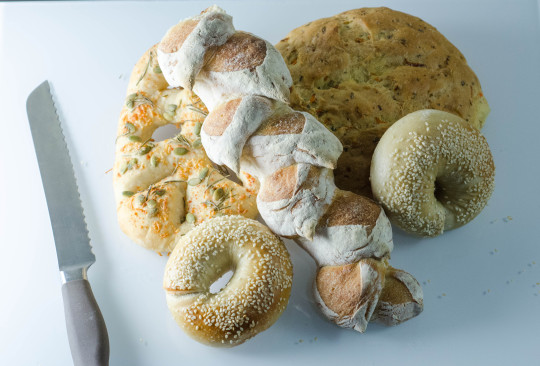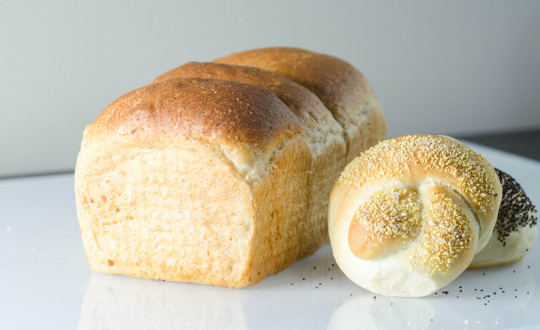Roopa
I’ve tried to make a summary of the key things learned about bread baking from my course at the Vancouver Pastry Training Center.


Desired Dough Temperature (DDT) Calculations
This is the method of calculating the proper water temperature for fermentation. Unfortunately, it is done in the objectively sub-par imperial system.
- Determine your DDT. For lean doughs (< 4% fat) the DDT is 74F – 78F. For enriched doughs (>4% fat) the DDT is 82F.
- Determine your temperature factors. The primary ones are the room temperature, flour temperature, kneading time (multiply by two), pre-dough temperature, and inclusion temperature. You may have 3 – 5 factors.
- Add together the values of the temperature factors.
- Multiply your DDT by the number of temperature factors you have, and subtract the summed temperature factors.
- The result is the required water temperature
(DDT X # of factors) – (sum of factors) = required water temperature (in F)
Flour Types:
Using the proper type of flour is very important for bread baking. Gluten development is critical in breads, so the flour used must reflect that.
Pastry flour: 8-9% gluten
All purpose flour: 10% gluten
Bread flour: 12 – 14% gluten
The kneading of bread develops the gluten, so you want to start with a higher gluten percentage. Pastry flour is appropriate for light and fluffy cakes and pastries, while bread flour is suited to chewy breads.
Yeast:
Chef Marco had pretty strong feelings about using dry yeast. He said that if you MUST use dry yeast, use only traditional dry yeast. If you have any other option, get fresh yeast. Also, 1 g of yeast can make a very significant difference, so be sure to weigh ingredients.
Baking:
For a standard sized loaf, you want to use a temperature that allows the loaf to bake in 45 minutes. This varies by oven, so it can take some experimentation. Overall, baking splits into three primary phases.
1) The first 10-15 minutes injects steam into the bread. Steam delays the crust from baking, which allows a final expansion. Steam can also take off excess flour on the crust. If you don’t have a fancy oven with a steam injection button, you can replicate the effect by putting heavy metal objects and/or lava rocks into a cast iron pan, and pre-heating it with the oven. When the bread goes in the oven, add a bunch of ice to the pan. The temperature difference will cause a steam cloud. The only two breads that aren’t baked with water are croissants, and pizza. Otherwise, yeast = steam.
2) The next 10 – 15 minutes are kind of boring.
3) The last 10-15 minutes need the steam to be released. If your oven also lacks vents, just open the door for a few seconds periodically to let the steam out. The doneness of the bread is determined almost entirely by colour. If you’re baking at the right temperature, the bread should be baked after about 30 minutes.
Ingredients:
Milk powder: shortens gluten strands for a softer texture
Sugar: feeds yeast
Salt: allows a longer, softer texture
Malt syrup/powder: The abundance of enzymes allows for a long fermentation
Rye flour: tasty!
Freezing:
If you freeze bread, it should be done while hot to trap in as much moisture as possible. Also, do a 60% bake rather than a full bake.
One thought on “Bread Baking Tips”